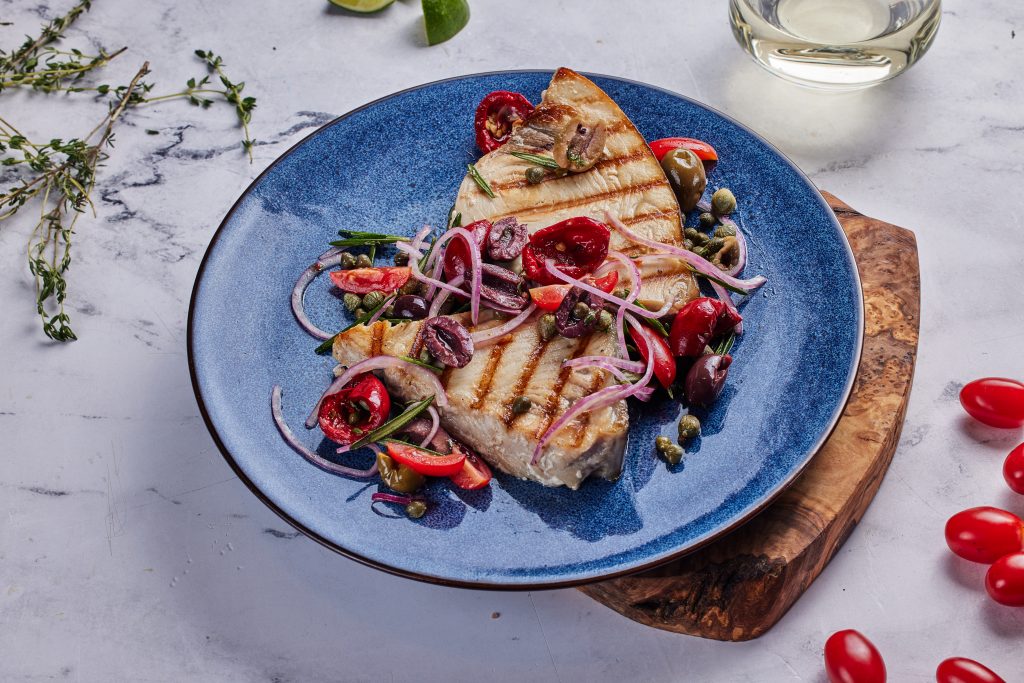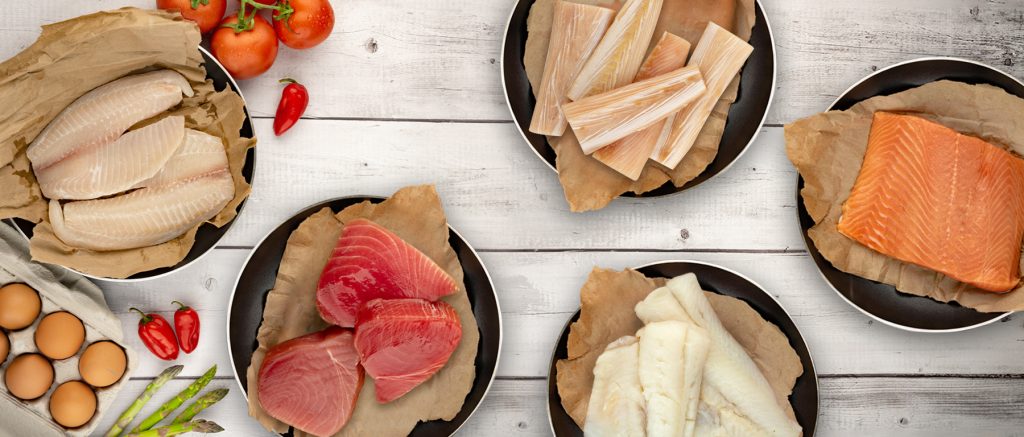Standing at the seafood counter, you've probably wondered: Should I eat farm-raised fish or choose wild-caught options? The debate between farm-raised vs wild-caught fish has intensified with questions like "Is wild-caught cod good for you?" and "Is farm-raised or wild-caught fish better?" dominating food forums.
The truth is, both farm-raised and wild-caught fish offer unique nutritional benefits and cooking properties. Rather than declaring one superior to the other, understanding their distinct characteristics can help you make informed decisions based on your flavor preferences or cooking style.

Both farm-raised and wild-caught fish serve as exceptional sources of high-quality protein. Fish naturally contains more beneficial unsaturated fats than land-based proteins like beef or chicken. Rich in essential nutrients and minerals, fish varieties consistently provide lean protein that supports muscle development, healthy weight maintenance, and overall wellness goals.
This high-quality protein profile makes both options excellent choices for muscle building, weight management, and overall health, regardless of whether your cod, salmon, or tilapia was raised on a farm or caught in the wild.
The most notable nutritional distinction between these two types is their fat composition. Fish raised in controlled environments typically develop higher fat levels, including beneficial omega-3s, due to specially formulated diets and reduced physical activity compared to their wild counterparts.
These healthy fats play vital roles in human health. Fish provides essential omega-3 fatty acids that our bodies cannot manufacture independently, supporting cognitive function, cardiovascular health, and reducing systemic inflammation.
Both options deliver impressive nutritional value with abundant omega-3 content. Farm-raised varieties often show higher absolute omega-3 quantities due to increased total fat, while wild-caught fish may offer better ratios between omega-3 and omega-6 fatty acids.
One of the most common concerns in sourcing fish relates to contamination levels. Tufts University reports that "a study of Atlantic salmon (the most consumed species in the U.S.) found that wild-caught salmon had higher levels of contamination, specifically heavy metals like mercury and arsenic and industrial chemicals like polychlorinated biphenyls (PCBs), than farmed."
It's crucial to recognize that environmental contaminants can affect both production methods. Chemical pollutants like PCBs and heavy metals such as mercury can accumulate in fish, whether farm-raised or wild-caught. Geographic location and water quality significantly influence contamination levels, making the source's environmental practices more critical than the production method alone.
Both varieties provide crucial micronutrients that support optimal health. Fish is an excellent source of iodine, an essential mineral that the human body cannot produce independently and must obtain through diet. Additionally, fish provides significant amounts of vitamin D for bone health, vitamin B12 for nervous system function, and iron for oxygen transport. These vital nutrients are present in similar concentrations across both farm-raised and wild-caught varieties, ensuring that either choice can effectively contribute to meeting your daily nutritional requirements.

Wild-caught fish develop their distinctive taste through diverse natural diets and active lifestyles. Fish living in open waters consume various prey, from small crustaceans to algae, directly influencing their flavor profile. This natural feeding creates complex, robust tastes that many describe as intensely oceanic, with mineral undertones and sometimes earthy notes. Wild varieties often exhibit seasonal taste variations as their diet changes throughout the year.
The controlled environment of aquaculture produces more predictable flavors. Fish raised in farms receive carefully formulated diets that create consistent taste profiles from harvest to harvest. These standardized feeding programs typically result in milder, smoother flavors with rich, creamy textures and less pronounced "fishy" characteristics.
This flavor consistency offers advantages for culinary applications. Restaurants can rely on uniform taste and texture when planning menus, while home cooks can achieve more predictable results in their recipes. The gentler, more approachable flavor profile makes farm-raised fish particularly appealing to newcomers to seafood or diners who prefer subtle tastes over bold, oceanic intensity. This reliability has made farmed varieties increasingly popular in professional kitchens and household cooking.

Wild fish develop firmer, denser muscle structure from constant swimming in open waters, creating a meatier texture and leaner composition. This lower fat content means wild-caught fish cook faster and require more careful attention to prevent overcooking.
The higher fat content in farm-raised fish acts as natural protection, allowing the fish to withstand higher cooking temperatures without becoming tough or losing moisture. The increased fat marbling also creates a more tender, flaky texture that many diners find appealing in finished dishes.
This built-in protection makes farm-raised fish forgiving for inexperienced cooks or aggressive cooking methods like grilling, broiling, or high-temperature roasting. The fat content provides a safety net that prevents the common mistake of overcooking.
While requiring more precise technique and timing, wild-caught fish can deliver exceptional results when handled with proper care and attention. Cooks working with wild-caught varieties should plan for shorter cooking times and consider methods that preserve moisture, such as poaching or gentle sautéing.
Many professional kitchens are dispelling outdated notions about farm-raised quality, recognizing that responsible aquaculture can produce exceptional products. The key lies in sourcing from reputable farms with high standards.
Progressive chefs also appreciate the storytelling aspect of responsibly farmed fish. Aquaculture operations like Marine Harvest by Mowi provide detailed information about feeding practices, environmental stewardship, and sustainable methods that resonate with environmentally conscious diners. This transparency allows restaurants to create meaningful connections between customers and their food sources while supporting responsible seafood production practices.

When considering your choice between farm-raised or wild-caught fish, the best answer depends on your priorities. Farm-raised varieties offer predictable cooking results, milder flavors, and beginner-friendly preparation, while wild-caught fish delivers bold, complex tastes and firmer textures.
The most practical approach is avoiding the either-or mentality entirely. Both options provide excellent nutrition and can satisfy different culinary needs. Both can be part of a healthy, varied diet.
Rather than choosing between farm-raised vs wild-caught fish, focus on sourcing from reputable suppliers like Marine Harvest by Mowi. We offer premium farm-raised and wild-caught options with full traceability and sustainability certifications. Diversify your seafood selections and support responsible practices throughout the industry, regardless of production method.
https://www.sagedining.com/digest/post/144434/from-our-dietitians-farmed-versus-wild-caught-fish
https://www.harmonsgrocery.com/2021/08/05/why-does-wild-salmon-cook-faster/
https://www.tasteatlas.com/with-fish-skip-farmed-go-wild-how-to-pick-wild-fish-every-time
https://www.usfoods.com/great-food/food-trends/as-the-tide-turns.html
https://www.eater.com/ad/24071072/farm-raised-fish-from-japan
https://www.health.harvard.edu/heart-health/the-story-on-fish-and-heart-health
https://www.medicalnewstoday.com/articles/iodine-rich-foods
https://www.usfoods.com/great-food/food-trends/as-the-tide-turns.html